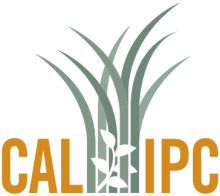Climate Matching Map
| Attachment | Size |
|---|---|
| ClimateMatch_CA_Euphorbia_hypericifolia.pdf (1.28 MB) | 1.28 MB |
1. Question 1
2. Question 2
3. Question 3
4. Question 4
5. Question 5
Many more Euphorbia species are either naturalized or invasive in California including: E. characias, dendroides, graminea, helioscopia, lathyris, maculata, nutans, peplus, prostrata, serpens (Calflora and iNaturalist).
6. Question 6
Occurrences that match California's climate are more scattered and include South Africa, Chile, eastern China, the Mediterranean basin, and US (southern California, Arizona, New Mexico, Alabama, and Tennessee) (GBIF, iNaturalist).
7. Question 7
8. Question 8
9. Question 9
10. Question 10
11. Question 11
12. Question 12
13. Question 13
14. Question 14
15. Question 15
16. Question 16
17. Question 17
18. Question 18
19. Question 19
20. Question 20
Evaluation Notes
The common horticultural container plant Euphorbia ‘Diamond Frost’ is sometimes attributed to Euphorbia hypericifolia but it is not closely related (CDFA). Ron Vanderhoff suspects that Euphorbia is marginally adapted to xeric conditions and will likely become a common urban weed but will only marginally establish in wildlands (2022).
CABI:
https://www.cabi.org/isc/datasheet/119929
Accessed 09/23/2022
CDFA
https://blogs.cdfa.ca.gov/Section3162/?p=4339
Accessed 09/23/2022
Flora of North America
http://www.efloras.org/florataxon.aspx?flora_id=1&taxon_id=242321438
Accessed 09/26/2022
GBIF:
https://www.gbif.org/species/3066321
Accessed 09/23/2022
iNaturalist:
https://www.inaturalist.org/observations?place_id=any&subview=map&taxon_...
Accessed 09/23/2022
NCSU Extension:
https://plants.ces.ncsu.edu/plants/euphorbia-hypericifolia/
Accessed 09/26/2022
PIER:
http://www.hear.org/pier/wra/pacific/Euphorbia_hypericifolia_PMC.pdf
Accessed 09/26/2022






